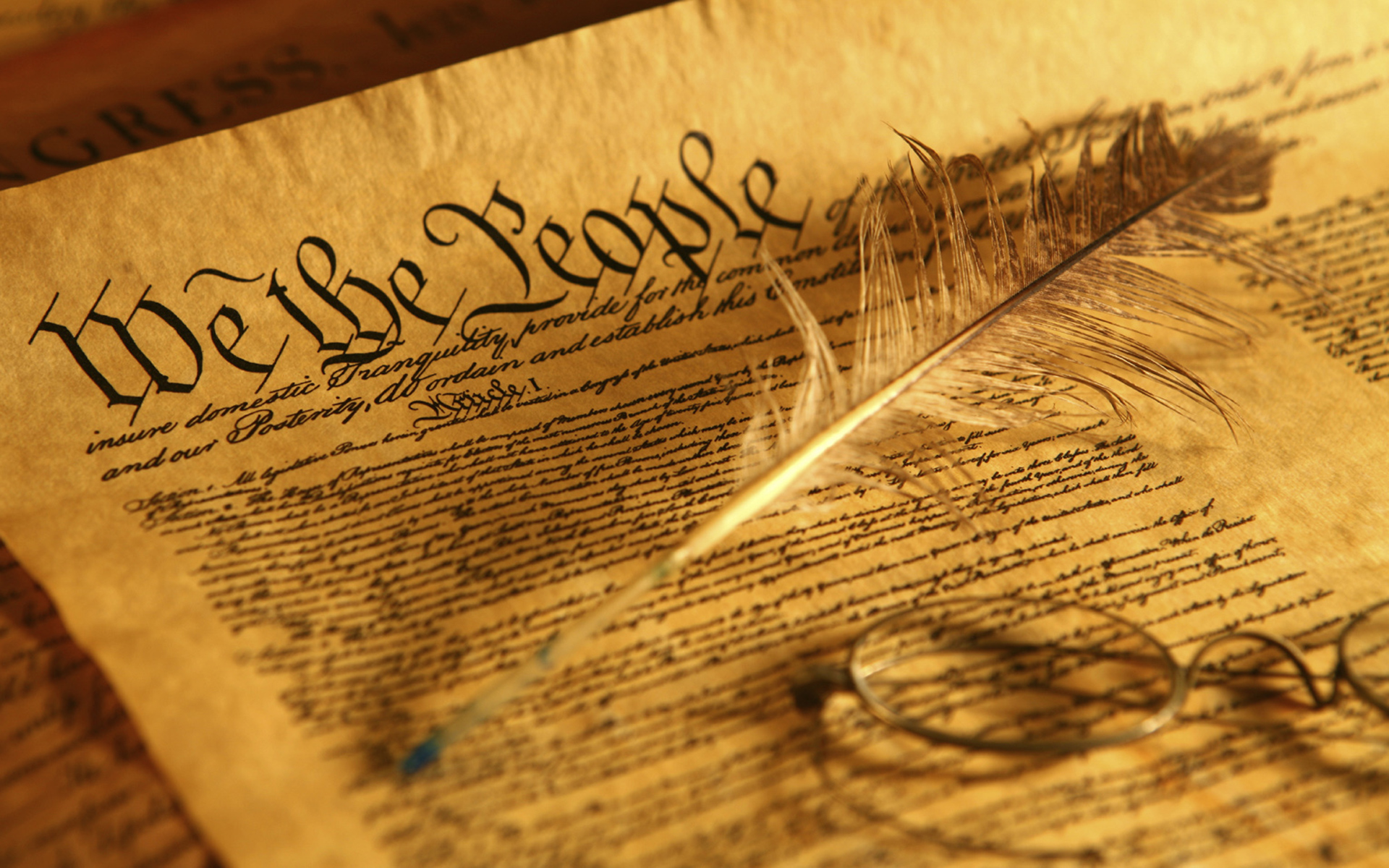What are the Top Court Cases of All Time?
The law is an ever-evolving entity in a symbiotic relationship with its citizens; it shapes us, and we shape it. Here is the list of the most prominent court cases in the United States that have, inevitably so, shaped our lives for years to come. The Law Offices of Stevens & McMillan are forever indebted to such cases, and work to honor them everyday! For all your Employee Rights needs, give us a call at (800) 738-3353.
On May 17, 1954, the Supreme Court unanimously declared state laws that established separate public schools for black and white students unconstitutional, saying they had a detrimental effect on minority children. Though the decision helped spur the civil rights movement and paved the way for integration, it was not welcomed overnight. In 1957, Arkansas Governor Orval Faubus used the National Guard to block nine black students from entering Little Rock High School. In 1963, Alabama Governor George Wallace personally blocked a door at the University of Alabama to prevent two black students from enrolling. In both cases, the incidents resulted in interventions from the highest level — in Little Rock, President Dwight D. Eisenhower deployed the 101st Airborne Division to integrate the school, while in Alabama, President John F. Kennedy sent in the National Guard to remove George “segregation now, segregation tomorrow, segregation forever” Wallace from the university doorway.
Roe v. Wade divided the country into those who believed in an unborn child’s right to life and those who believed in a woman’s right to choose. It raised issues of morality and privacy and is still hotly debated today. In the early 1970s, Norma McCorvey (alias Jane Roe) was a single Texas mother. Pregnant for a third time, McCorvey decided she did not want to bear a third child, but Texas state law prevented her from having an abortion. On Jan. 22, 1973, the U.S. Supreme Court ruled that the constitutional right to privacy extends to a woman’s decision to have an abortion. The decision came too late for Roe, who was impregnated in 1969 (she had the child and gave it up for adoption), but it guaranteed the right of women nationwide to terminate unwanted pregnancies through abortion by obliging all 50 states to legalize the divisive medical practice.
That most television-friendly of Supreme Court cases,Miranda v. Arizona, was decided in 1966. Under Chief Justice Earl Warren, the court determined 5 to 4 that the police had to follow certain procedures to ensure the protection of a criminal suspect’s Fifth Amendment privilege against self-incrimination. The ruling included the stipulations that suspects be told they have the right to remain silent, that anything they say could be used against them and that they have the right to an attorney. Without these Miranda warnings, the court deemed, prosecutors could not use statements made by defendants under interrogation. The decision reversed the conviction of Ernesto Miranda, who had been found guilty of kidnapping and rape in Arizona after he had confessed during police questioning without being informed of his rights.
Before vacating the Oval Office in March 1801, John Adams appointed a number of Federalists to judicial openings in an attempt to handicap President-elect Thomas Jefferson’s incoming Democratic-Republican Administration. But because Adams’ Secretary of State, John Marshall, failed to deliver all of the appointees’ commissions, and because Jefferson subsequently directed his new Secretary of State, James Madison, not to deliver the remaining notices — a number of employees were unable to assume their new positions.
One frustrated appointee, Federalist William Marbury, petitioned the Supreme Court to force Madison to deliver his commission. On Feb. 23, 1803, the court handed down a unanimous decision that Madison was not required to deliver the agreement because the law requiring such action — the Judiciary Act of 1789 — conflicted with a piece of the Constitution. Marshall, by that time Chief Justice, argued that the Judiciary Act was unconstitutional and therefore void, thus establishing the basis for judicial review and solidifying the role of checks and balances in American government.
It had been 70 years since the Supreme Court had last tackled the central conundrum of the Second Amendment: Does the right to bear arms apply only to militias? This 2008 case specifically challenged Washington, D.C., gun-control legislation that generally prohibited carrying a pistol without a license and also required that all firearms be kept unloaded. In a split decision, the often conservative-leaning Roberts court concluded that the Second Amendment does protect an individual’s right to possess a firearm unconnected with service in a militia. It was possibly the most important government statement regarding guns in the U.S. since the Second Amendment was ratified in 1791.
In January 2010, the Supreme Court upheld the right of corporations to spend money influencing political campaigns, ruling that these entities ought to have the same First Amendment rights as individuals to engage in “political speech.” The historic — and, in some quarters, infamous —Citizens United v. Federal Election Commission decision fell to a tight 5-to-4 vote. Its implications are huge: superseding earlier understandings, the court deemed corporate money, funneled by lobbyists and special-interest groups into politics, equivalent to any individual donation — even though, by many people’s reckonings, a corporation with its resources and focused agenda is hardly the same thing as an individual person. President Obama, for one, was scathing about the verdict, saying “this ruling strikes at our democracy itself.” But such prominent First Amendment advocates as Floyd Abrams — often associated with defending journalists’ rights — argued vociferously that the court did the right thing by preserving the guarantees of the amendment.
Long before Rosa Parks refused to move to the back of the bus, Homer Plessy refused to move to a “blacks-only” railway car. Plessy, who was seven-eighths white and one-eighth African American, was arrested in accordance with Louisiana’s Separate Car Act. In 1896, the Supreme Court ruled the law did not contradict the 14th Amendment’s equal-protection clause. And while the majority opinion didn’t include the exact phrase “separate but equal,” that’s the concept it sanctioned. According to the court, the Constitution guaranteed legal, but not social, equality: segregation was constitutional. There was just one dissenting opinion, from Judge John Marshall Harlan, who wrote, “Our Constitution is colorblind, and neither knows nor tolerates classes among citizens.” More than half a century would pass before the Supreme Court ruled on “separate but equal” in Brown v. Board of Education.
In Bush v. Gore, the Supreme Court decided one of the closest presidential elections ever. With both former Texas governor George W. Bush and Vice President Albert Gore needing to win Florida to claim the presidency, polls closed with just 537 votes separating them. The closeness of the race merited a machine recount of ballots under Florida law. Due to highly-publicized controversy over whether the design of the ballots confused voters or whether machines would miscount incorrectly completed ballots, the Florida Supreme Court ordered manual recounts in several counties. But the U.S. Supreme Court immediately ordered these recounts halted the following day, declaring that counting certain ballots by different methods than others violated the Equal Protection Clause of the Fourth Amendment. The Court found that the recount ordered by the Florida Supreme Court was invalid, and that no alternative recount could be performed within the state’s legal time limit. On 12 December 2000, the Supreme Court ruled that the original Florida results would stand, effectively naming Bush the next President of the United States.
In a landmark decision for the gay rights movement, 2003’sLawrence v. Texas declared unconstitutional a Texas law prohibiting sodomy. The case arose when police, after receiving a tip of a domestic disturbance, arrested two men found engaged in homosexual activity. When the case eventually made its way up to the Supreme Court, the 6-3 decision also struck down similar sodomy laws in 13 other states, thus legalizing consensual same-sex sexual activity in all U.S. states and territories. On behalf of the majority, Justice Anthony Kennedy maintained that the right to privacy protected such sexual acts, overruling the Court’s previous view that had resulted in the opposite verdict over a similar 1986 case, Bowers v. Hardwick. Justice Antonin Scalia wrote a dissenting opinion, arguing that states should be able to legally enforce moral opposition to homosexual conduct. But only two fellow justices backed him, and the case soon became an iconic victory for gay rights activists across the nation.
Dred Scott, a slave who had lived in the free state of Illinois and the free territory of Wisconsin before moving back to the slave state of Missouri, appealed to the Supreme Court in hopes of being granted his freedom. Instead, in 1857, in the case of Dred Scott v. Sanford, the United States Supreme Court declared that all blacks — regardless of whether they were slaves or free men — were not and could never become citizens of the United States. The court also ruled that the 1820 Missouri Compromise was unconstitutional. The decision meant that slavery would be constitutionally permitted throughout the entire country and its territories.
Led by Chief Justice Roger B. Taney, a staunch supporter of slavery, the court’s majority held that, because of Scott’s color, he was not a citizen and therefore had no standing to sue. Taney wrote in the Court’s majority opinion that the framers of the Constitution believed that blacks “had no rights which the white man was bound to respect; and that the negro might justly and lawfully be reduced to slavery for his benefit. He was bought and sold and treated as an ordinary article of merchandise and traffic, whenever profit could be made by it.”
While the Declaration of Independence clearly includes the phrase “all men are created equal,” Taney argued that “it is too clear for dispute, that the enslaved African race were not intended to be included, and formed no part of the people who framed and adopted this declaration.”
Abolitionists were appalled by the court’s decision. However, some, including Frederick Douglass, hoped that the ruling would put a spotlight on the issue of slavery and would ultimately result in its destruction.




